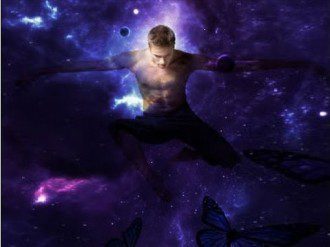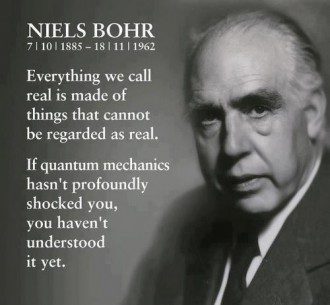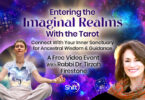16th August 2016
Guest writer for Wake Up World
What are Quantum Jumps?
The popular expression “quantum jump” is used in common English speech to describe a leap that is big—but to physicists, quantum jumps are tiny, discrete (indivisible), and abrupt. The idea of quantum particles is that they can exist in material form at one energy level or another, but not in between. When quantum particles are observed to make a quantum jump from one state to another, scientists watch them appear to blink on and off.
Quantum jumping is the process by which a person envisions some desired result or state of being that is different from the existing situation—and by clearly observing that possibility and supplying sufficient energy, makes a leap into that alternate reality. The idea behind quantum jumping is that we are living in a multiverse of parallel universes. Usually, these alternate realities have no connection to one another. A quantum jump can be made through a kind of handshake through time and space—this connection forms a bridge that allows someone experiencing a quantum jump to physically end up in another reality. The connection is so total that a person can literally walk into another place and time. While to the universe, both of “you” still exists, your awareness of who you are coalesces in one reality, often leaving the other out of reach, out of sight, and out of mind.
[pro_ad_display_adzone id=”110028″]
Does any of this seem outlandish or too far-out to be real? While quantum jumping may at first sound like an idea from science fiction, this term actually covers a wide range of experiences from the rather mundane to the truly extraordinary.
As you learn more about various examples of quantum jumps, you’ll likely recognize common experiences from your daily life when you’ve made quantum jumps—often without realizing it at the time.
Imagine the example of a child who receives a mother’s kiss after falling down and skinning a knee who suddenly feels much better…or any of a number of clinical trial participants with headaches who, upon taking a placebo (such as a sugar pill), is amazed to find a terrible headache suddenly gone. Visualize another example of a man preparing for an interview by dressing for success…in attire worn by those making the hiring decisions.
In these examples, we find no material-based reason for why the child and clinical study participant are feeling much better and the interviewee feeling so much more confident and self-assured; but chances are very good that we’ve felt such inexplicably dramatic improvements many times in our lives over the years.
Some quantum jumps can literally be leaps to a better future, as seen in the real-life example of Ashley Clouse’s ten-foot leap to safety in the face of an oncoming tornado. We are capable of taking hundreds of quantum leaps in any given day, making decisions that seem inconsequential or small at the time, yet have the collective power to entirely transform our lives. A daily decision to spend a few minutes writing, exercising, or practicing music makes a tremendous difference in a person’s life over a period of weeks, months, and years.
In most cases, people experience walking into parallel worlds that are nearly—but not quite entirely—identical to the one they came from. In such cases, it is possible to find something has seemingly shifted in some startling way. A door or building may appear where one had not been before, or you might notice your keys are not where you left them…and after searching for a while, be surprised to find them in a very odd place or a place you’d already searched with no apparent explanation. These types of quantum jumping reality shifts are remarkably commonplace; yet, unless we pay attention to them, they often go unnoticed and unannounced.
How Are They Possible? The Science
Consider the idea that many times—possibly even every time—you make a decision or choice, you are actually moving between alternate realities, between parallel worlds. In those alternate realities, there is another possible “you” who you can connect with so strongly that the conscious awareness and energy that is you literally moves into that other reality, quantum jumping in the process. When feeling so strongly connected to another self in a different reality, it is possible to gain direct access to the knowledge available only in that time and space and to experience an entirely different self.
What makes quantum jumping possible is that, like a quantum particle, every person has the ability to exhibit quantum behavior. While it may seem extremely improbable that you can do the things quantum particles do—such as tunnel through solid barriers, or make quantum jumps to other alternate times and places—our current understanding of physics suggests such things are within the realm of possibility and can be expected to occur.
Experimental observations at the quantum level change our assumptions about reality as we see that: quantum particles are not always particles and sometimes exist as pure energy; some kind of invisible connection exists between entangled quantum particles, so they move together simultaneously with non-local spooky action at a distance; simply by observing an experiment we are affecting it; and, unlike classical physics, quantum behavior can only ever be predicted by probabilities.
In order to explain some of this truly strange quantum behavior, Niels Bohr theorized that quantum particles exist as waves that might be anywhere until the wave function is collapsed. Hugh Everett III theorized that we exist in a multiverse consisting of many worlds of parallel realities.
Physicist John Cramer theorizes it is possible for information to be exchanged between past and future through a kind of handshake between two points in space-time. Scientists David Bohm and Karl Pribram proposed the universe is a giant hologram, containing matter and consciousness in a single field.
What all this means to someone experiencing a quantum jump is that they can enter another parallel reality by relaxing and imagining they are accessing some kind of bridge, window, or doorway to another world with another self who has another set of characteristics, qualities, or skills. With quantum jumping, one makes the leap from simply imagining oneself in an alternate reality to actually being that other self. In this fashion, a mother who’d moments earlier stood atop a huge boulder holding her child’s hand as an enormous tornado raced their way can switch from not being able to imagine herself jumping straight down off a boulder to making that ten-foot leap to safety.
The success of most all visualization methods, affirmations, faking it ‘til you make it, the placebo effect, and even simply getting out of bed when you don’t feel like it can be attributed to quantum jumping.
Why Do Quantum Shifts Occur?
In order to understand quantum jumps, it’s essential that we fully appreciate what “quantum” means. The word “quantum” in the field of physics is defined in the Oxford dictionary as being: “a discrete quantity of energy proportional in magnitude to the frequency of the radiation it represents.” “Quantum mechanics” is defined as: “the branch of mechanics that deals with the mathematical description of the motion and interaction of subatomic particles, incorporating the concepts of quantization of energy, wave-particle duality, the uncertainty principle, and the correspondence principle.” The whole reason this field of physics studying the very small sprang up in the first place was in pursuit of the true nature of reality. “What is the true nature of reality?” has been the guiding question inspiring generations of physicists to pursue ever smaller particles on the quest to find the most fundamental irreducible ‘building block’ from which all that we see and know to be real springs forth. Atoms were found to consist of protons, neutrons and electrons—spinning so rapidly through mostly wide open spaces while invisible to the human eye—yet we know they exist, thanks to experiments with “atom35 smashers.” Early discoveries of even smaller bits of matter rocked the world in the twentieth century. But the most unsettling thing to scientists wasn’t so much the miniscule size of these quantum particles as it was the way these quantum particles behave, which is fundamental to the way quantum jumping works.
[pro_ad_display_adzone id=”110030″]
Quantum Weirdness on the Macro Scale
There are many types of behaviors exhibited at the quantum level that we don’t expect to see on the ‘macro scale’ of our daily lives, mostly because we’re unaware of being readily able to observe them with our ordinary senses. Our perception of our world in this new Quantum Age is about to undergo something on par with the Copernican Revolution. In the Copernican Revolution of the sixteenth century, most people worldwide changed their mental model of our solar system from envisioning the sun and planets revolving around the Earth to realizing the Earth revolves around the sun. This changing worldview depends on scientific observations of quantum behavior on the macroscopic scale of physical objects we can readily observe with our ordinary senses. Such aspects of quantum weirdness (that affect and are foundational to our ability to make quantum jumps) include: quantum superposition of states, quantum coherence, quantum entanglement, quantum tunneling, and quantum teleportation.
Quantum Superposition of States
Quantum superposition is a fundamental principle in quantum mechanics by which all possibilities for something in material form exist simultaneously in all possible particular states (or all possible configurations of its properties, which is clearly interconnected with the phenomena of quantum jumping)—but whenever measured or observed, the result corresponds to only one of those possible states or configurations.
Quantum Coherence
Quantum coherence is another basic principle in quantum mechanics by which, in any given quantum system, all parts of that system remain in perfect synchronization with one another. There is currently no observable mechanism by which a given quantum system achieves such a state, yet this feature of coherence allows quantum systems to achieve amazing levels of efficiency.
Quantum Entanglement
Physicist Erwin Schrödinger introduced entanglement as a correlation of different measurement outcomes with the German word ‘Verschrånkung’, stating, “Maximal knowledge of a whole system does not necessarily include knowledge of all of its parts, even if these are totally divided from each other and do not influence each other at the present time.” There is a level of interconnectedness by which quantum particles move in simultaneous synchronization, even when separated by distance in space.
Quantum Tunneling
Quantum tunneling is a quantum mechanical effect in which particles have a finite probability of crossing an energy barrier, such as the energy needed to break a bond with another particle, even when that quantum particle’s energy is less than the energy barrier. Because matter is both particle and waves, something can exist on one side of a barrier, then exist in energy wave form, and then be observed on the other side of a barrier.
Quantum Teleportation
Quantum teleportation is a term used to describe the instantaneous transference of properties from one quantum system to another without physical contact, which is an essential facet of quantum jumping. As for what causes such remarkable behavior at the quantum level of reality—nobody really knows for sure. The mathematical equations describing quantum behavior work beautifully well, yet the behind-the-scenes why and how of it are anything but obvious. There are numerous physics theories that each explain what’s going on in their own unique ways, and these theories are known as ‘interpretations’ since they provide us with possible explanations for what might be going on, based on sound assumptions. Chief among these theories, which seem to do an excellent job of accounting for “quantum weirdness” are: John Cramer’s Transactional Interpretation, Hugh Everett III’s Many Worlds Interpretation (MWI), David Bohm’s Holographic Interpretation, Leonard Susskind and Raphael Bousso’s Holographic Multiverse Interpretation, and Niels Bohr’s Copenhagen Interpretation.
John Cramer’s Transactional Interpretation
— a ‘handshake’ between future and past
John Cramer’s transactional interpretation of quantum physics suggests that “handshakes” take place between quantum particles in different points in time and space, which supports the phenomena of quantum jumping. In Cramer’s interpretation, a particle here and now on Earth instantaneously communicates with particles light-years away in time and space, as one particle sends an “offer” wave and another responds with a “confirmation” wave.
David Bohm’s Holographic Interpretation
— enfolded order
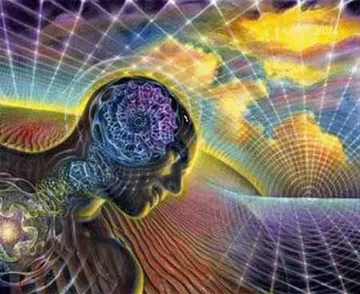 University of London physicist David Bohm and Stanford University neurophysiologist Karl Pribram proposed that the universe may be like a giant hologram, containing both matter and consciousness as a single field. This model suggests that the objective world “out there” is a vast ocean of waves and frequencies, which appears solid to us because our brains convert that enfolded hologram into unfolded physical material we can perceive with our senses. As the English poet William Blake explains, we thus “… see a world in a grain of sand.”
University of London physicist David Bohm and Stanford University neurophysiologist Karl Pribram proposed that the universe may be like a giant hologram, containing both matter and consciousness as a single field. This model suggests that the objective world “out there” is a vast ocean of waves and frequencies, which appears solid to us because our brains convert that enfolded hologram into unfolded physical material we can perceive with our senses. As the English poet William Blake explains, we thus “… see a world in a grain of sand.”
Hugh Everett III’s Many Worlds Interpretation (MWI)
— many parallel worlds
In the 1950s, Hugh Everett III proposed that every possibility inherent in each wave function is real, and that ALL of them occur. Possibilities become actualities with each measurement that is made, and infinite slightly different realities come into existence as each quantum event is observed. All possibilities are equally real in the multiverse. Parallel universes coexist side-by-side, undetected by one another, which is critical to understand if you are interested in mastering the art of quantum jumping.
Niels Bohr’s Copenhagen Interpretation
— popping the ‘quiff ’ / collapsing the wave function
The Copenhagen Interpretation of quantum physics was first described and presented by Niels Bohr in Italy in 1927. Bohr suggested that quantum particles exist as waves, which might be anywhere until the wave function is collapsed. As long as nobody looks, each quantum particle is equally distributed in a series of overlapping probability waves, in a superposition of states. An observer is required to assist in ensuring quantum choices are made.
Holographic Multiverse Interpretation
— many unified parallel worlds
UC Berkeley’s physicists Leonard Susskind and Raphael Bousso assert that the global multiverse is a representation of the many worlds within a single holographic superstructure providing enclosed universes with boundaries. All the physics of the multiverse is encoded upon the boundary in time of the surrounding superstructure, where time is set to infinity. Observers are aware of their own slices of reality in space and time within their respective universes.
Interpreting Your Quantum Leaps
It’s important to note that all the above possible explanations for what’s happening on the quantum level end with the word “interpretation,” reminding us that no physicist yet lays claim to anything akin to a quantum “law” of physics.
The best that’s so far been achieved are some beautiful possible topographies and elegant mathematical descriptions. It is clear that John Cramer’s Transactional Interpretation of quantum mechanics offers some uniquely helpful insights to assist anyone desiring a quantum jump, as does the relatively new Holographic Multiverse Interpretation. I love the idea that quantum theories can be combined to create imaginative new interpretations in much the same way that chefs create exotically delicious concoctions such as Thai-flavored Mexican burritos!
It’s entirely possible that rather than just one of the above interpretations being correct and all others incorrect, several theories may be working together. The Holographic Multiverse Interpretation, for example, is a combination of the Holographic Interpretation with the Many Worlds Interpretation that provides a more holistic, integrated version of many possible worlds. Within a holographic multiverse, there is an interconnectedness between each part of any given parallel universe and all other possible parallel worlds within that holographic multiverse. When the Holographic Multiverse Interpretation is combined with the Transactional Interpretation, we gain an extraordinary view of reality that can truly broaden our minds and allows for the experience of quantum jumping.
The Transactional Interpretation involves absorption and emission of waves, with perfect symmetry occurring between emitted and absorbed waves. In essence, what is happening is a synchronized behind-the-scenes choreography in which one point in space-time communicates with another in something akin to a handshake. When you realize that some information is moving forward in time and some backwards through time, there is equal significance to receiving information as there is to sending it—both are equally active and involved. As physicist Ruth Kastner points out, “Why should Nature care whether we ‘observe’ or not…?
The only way that Nature could know or care would be because something physical really happens in such “observations,” and the only possible physical process accompanying an “observation” is absorption.”
How Do They Work?
You’ve probably heard of self-fulfilling prophecies in which people often experience that which they expect. Professional athletes take advantage of this phenomenon by practicing visualization of perfect performance in order to get the best results.
Starting with an understanding that everything is made up of quantum material at its very core, the idea behind quantum jumps is that it’s possible to jump to an alternate reality in much the same way that an electron dematerializes at one orbital level and reappears at another. The fundamental principles behind quantum jumping are based upon the behavior of these very smallest particles known in physics—quantum particles. There is a superposition of states in the time of dematerialization in which a quantum particle is between states and is behaving like pure energy rather than like a particular piece of matter. Just as electrons can make energetic leaps from one energetic level to another, people can quantum jump through alternate realities to experience dramatic shifts in physical reality. Quantum jumps can be envisioned as occurring in a multiverse of many alternate realities. Within each one of these realities exists another possible “you” that you can just as easily be.
Anyone who can relax, clear their mind, and envision being different in some way—such as more successful, funny, healthy, wealthy, or wise—can quantum jump. To initiate a quantum jump requires keeping an open mind that you can experience another reality. It is important that you are able to sincerely desire and feel a connection to another reality, envisioning some way of making a connection with it through a bridge, a door, a window or a handshake.
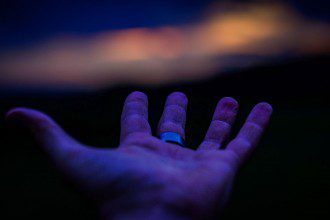 Your ability to form a strong intention, to concentrate, and to get and stay focused while feeling detached from concerns of daily life—relaxed, open-minded, and emotionally energized—are essential. Just as when you shift gears on your can you must first disengage from one gear before re-engaging in a new gear, you must attain a mindset of detachment in order to release connections to physical realities you have felt locked into with your thoughts and feelings. Detachment and disengagement give you a necessary break from identifying as who you’ve thought you are, so you can experience the ecstasy of feeling relaxed and energized in a state of pure consciousness for a little while. In such a state of pure consciousness, you become aware that you are capable of sensing all possible realities, and you realize that you can emerge from this meditation or lucid dream into the best possible reality for you.
Your ability to form a strong intention, to concentrate, and to get and stay focused while feeling detached from concerns of daily life—relaxed, open-minded, and emotionally energized—are essential. Just as when you shift gears on your can you must first disengage from one gear before re-engaging in a new gear, you must attain a mindset of detachment in order to release connections to physical realities you have felt locked into with your thoughts and feelings. Detachment and disengagement give you a necessary break from identifying as who you’ve thought you are, so you can experience the ecstasy of feeling relaxed and energized in a state of pure consciousness for a little while. In such a state of pure consciousness, you become aware that you are capable of sensing all possible realities, and you realize that you can emerge from this meditation or lucid dream into the best possible reality for you.
You Can Jump If You Want To
If you can walk, you can dance—and you can quantum jump. Your body is designed for quantum jumping, so learning how to improve your skills can be every bit as simple as making the transition from walking to dancing. The essential spirit of quantum jumping might be summed up in American psychologist William James’ words, “If you want a quality, act as if you already have it.” Sounds simple enough, right? Well, as you might have suspected, sometimes there can be a little more to it than that. If we were perfectly now-centric beings, with no worries for the future or regrets and misgivings about the past, quantum jumping would be much easier for the simple reason that we’d all be experiencing the benefits of having beginner’s mind. The challenges of jumping to a new reality become clear when we start doubting ourselves based on who we think we are based on what we’ve already done and what we think we can do. These areas are outside the realm of the eternal now, yet most people who don’t practice mindfulness tend to worry a fair bit about the future and the past. When we’re not mindful, it’s easy to get caught up in drama triangles in which we feel like we’ve been victimized, or like there is a “bad guy,” or that we need to rescue someone. What we need, in other words, is the ability to focus exclusively on who we’d most like to be and what we most need to be doing without getting caught up in all the drama we’re so used to in our everyday lives. Here’s where we can gain some insight from those who study the nature of reality and consciousness in the fields of neuroscience and physics.
Neuroscientist Gregor Thut of the Institute of Neuroscience and Psychology observes, “Despite experiencing the world as a continuum, we do not sample our world continuously but in discrete snapshots determined by the cycles of brain rhythms.” Quantum jumping takes advantage of these usually unseen discontinuities, so we can make a leap from one reality to another as smoothly as walking through the one we’re already in. And one of the more interesting aspects of quantum jumping is that in addition to making a leap to a parallel reality, we’re making changes to our futures and our pasts. You’ve felt such changes happen to your future and your past any time you’ve felt increased hope for your future or gratitude for your past… as doubts, worries, regrets, and fears slipped away. As H.G. Wells said in the movie The Time Machine,
“We all have our time machines, don’t we. Those that take us back are memories… and those that carry us forward are dreams.”
But what if making a leap to a better reality could be easy?
What if we could get help to stay balanced and take our first steps in a new direction when we need it? When we consider the Transactional Interpretation of quantum physics where there’s a “handshake” between a possible future point in space-time and now, we see something amazingly special going on.
There is every bit as much involvement from the future point in space-time reaching back to you as there is from you reaching forward for that “brass ring.” Why is imagining a future You that is reaching back and giving you a hand up so important?
Because it makes the study of quantum jumps so much easier. You don’t need to make such a huge effort. It’s just as important to relax, raise your confidence and Qi (internal energy) to a level where you feel closely aligned with your desired future reality.
In June 2006, dozens of scholars traveled from all around the world to gather in San Diego, California, at the “Frontiers of Time: Retrocausation—Experiment and Theory” physics symposium. This very special section of the 87th annual meeting of the Pacific Division of the American Association for the Advancement of Science (AAAS) was convened for the purpose of examining the nature of time… and causality.
Conference organizer and University of San Diego physicist Daniel Sheehan explains, “To say that it’s impossible for the future to influence the past is to deny half of the predictions of the laws of physics.” Despite the fact that no clear consensus viewpoint yet exists amongst leading researchers in the field of reverse causation (also known as backward causation or retro-causation) as to just how, exactly, the future can influence the past, most physicists do accept the idea of time symmetry, which is foundational idea for the existence of the phenomena of quantum jumping. “The tendency is to ignore it, to say it’s just a fact of nature that time moves one way,” said physicist Michael Ibison from the University of Texas at Austin.
Daniel Sheehan agrees, “People know how to calculate with quantum mechanics, but that’s not to say they know what it means. Quantum mechanics is like poetry. The poem is right there, for everyone to see, but it has many different interpretations.” While University of Washington physicist John Cramer awaits positive results from his experiment to detect photons of light before they’ve been emitted, the best current evidence for reverse causation comes from the field of parapsychology, where experiments are being conducted to investigate such things as telepathy, clairvoyance, precognition, psychokinesis, and other types of psi phenomena. While growing numbers of studies in the field of parapsychology, such as those by UC Berkeley physicist Henry Stapp, indicate experimental participants are able to influence radioactive decay of isotopes in the past, few mainstream research laboratories are repeating these experiments, proving that mind does indeed affect matter and therefore is an important part of the process of quantum jumping. Said Stapp,
“You’d think people would want to either refute or confirm some of these reports, but the only people willing to test them are people who already tend to believe them. Most mainstream labs shy away for fear of sullying their reputations, as if they would be dirtying their hands by even imagining some of this is possible.”
Who are our quantum jumping experts? We can look to our top athletes, medical miracle people who’ve experienced spontaneous remissions of otherwise incurable medical conditions, and our top businessmen and women. We can also learn from survivors who’ve experienced life-saving miracles; heroes who have acted courageously by “just doing what needed to be done”; people who’ve had near-death experiences (NDEs); experienced meditators; and people who’ve worked with lucid dreams, daydreams, and hypnosis to access other realities.
If you’ve sometimes recalled alternate histories—something like a different ending to a book or movie, or perhaps you’ve been surprised to hear recent news about a certain celebrity when you clearly remember seeing reports of their death—then you have already quantum jumped.
One of the important keys to success is knowing that there is much more than just one universe. There are many more than just two realities. You can think of what’s happening as a large number of possible realities co-existing in a blur of energy waves at every decision point. Amidst all these possible realities, there are some realities you are much more likely to find enjoyable and meaningful.
Exercise: Experiencing Quantum Shifts in Your Reality
The following three steps to experiencing quantum jumping are meditative in nature, so they tend to work best either while in quiet contemplation or in a daydreamy or hypnotic state. If you have access to a recording device and earphones, you can create your own guided journey through the three steps, playing it back as you fall asleep each night or during a peaceful time of day when you can close your eyes and completely relax.
People who experience miracles are described in Carolyn Miller’s book as creating the right conditions for miracles by attaining a detached and peaceful altered state, expecting a positive rather than a negative outcome, and focusing on love rather than fear with a changed perception of what had been viewed as the problem. Carolyn Miller defines a miracle as: “…an instance in which a supernatural power interferes in the natural world,” which sounds a lot like quantum jumps or reality shifts to me. As it turns out, the three steps of miracle-mindedness are similar to three steps for successful quantum jumps.
Quantum Jumping Steps
1. Attain a relaxed, detached, and peaceful altered state.
2. Feel energized about your visualized positive outcome.
3. Take positive action in keeping with your new reality.
Step One: Attain A Detached, Peaceful State of Mind
While you might think of achieving goals in terms of being active and doing things, one surprising truth about quantum jumps is that despite the name, “quantum jump,” there’s not so much action involved in the jumping as one might think. The required state before making a leap to another reality is more like being in-between states—in the midst of a nice daydream— than making a big effort or exertion. You can access such a detached state of mind through meditation or lucid dreaming.
This sense of peaceful detachment is vitally important because this state of mind allows us to let go of the conscious, ego-driven mindset that got us into whatever challenging situations we are presently engaged. We must let go of what we think is best and believe should occur, so we can maintain a neutral, receptive state of mind, which is critical to a successful quantum jump. The energy of charged emotions tends to lock realities and particular histories in place—so it’s essential that we attain a state of emotional and energetic detachment that allows us to calmly respond to whatever comes next.
We can experience mindful harmonious balance when we appreciate our many possible pasts and futures with gratitude and love rather than regrets and fears. Meditating at such a point of emotional balance and detachment helps us naturally achieve internal attitudinal adjustments, which in turn help us make better choices that we won’t regret later on and also facilitate the process of quantum jumping.
The key to meditation is mindful awareness. There are many ways to attain a detached, peaceful state of mind in meditation, including: walking meditation, breathing meditation, silent meditation, chanting meditation, meditating while gardening, meditating while bathing, or meditating doing dishes or chores.
Just as Asian cultures respect the complementary dynamics of Yin (feminine) and Yang (masculine), the first step in quantum jumping can be thought of as a meditative Zen-like acceptance of all that is while internally “going to our happy place.” This is a Yin quality of receptivity that appears to be the opposite of action. If you are experiencing the multiverse like a quantum particle, this state of detached receptivity feels like letting go of your material nature so you no longer fixate on any given point in space-time, and instead spread yourself out in the form of pure energy waves across all possible realities. In such a state of being pure energy, you can envision all possible futures and pasts and quickly see where each choice ends up.
Can you imagine that you and everything and everyone around you exists in a superposition of states? When we achieve a peaceful, detached state of mind, it’s analogous to the kind of superposition of all possibilities that a majority of physicists agreed is true for everything—quantum jumping included—not just tiny quantum particles.
It is possible to contemplate that we can make the best decisions when remembering that, in a multiverse of many possible worlds, everything can happen—and actually is happening— somewhere. In order to arrive at a preferred reality, we must first disengage and detach from our daily struggles by taking a meditative break in the peaceful feeling of calm we experience at the center of all options.
Quantum jumping is very much like shifting gears. When we change gears while driving a car with a stick shift, we move out of one particular reality—such as first gear—by first deselecting all gears as we put our foot on the clutch pedal.
From that place of accessing all possibilities, we can move to the next reality we select via the process of quantum jumping—such as second gear. Being conscious of existing in such a superposition of states is akin to being in a state of timelessness… a feeling of being detached from, rather than attached to, everyday reality. From meditating or dreaming in such a timeless place of pure energetic being, we can calmly focus on exactly what we’d most prefer to happen next before returning to our regular mindset and our preferred reality.
Step Two: Feel Energized About Visualized Outcome
Studies confirm that athletes perform considerably better after first visualizing success. More specifically, the top athletes depend on mental practice or imagery rehearsal of doing what it takes to be their best in order to help guarantee their winning edge. When athletes first practice their maneuvers in their imagination before actual physical performances, studies consistently show they benefit from improvements in skill, confidence, and a sense of calm. We can apply these insights to the process of quantum jumping as well.
Sports psychologists help Olympic athletes ensure better visualization of success by providing guided visualizations. Such a coach helps ensure that athletes spend 20 minutes or so relaxing first, before beginning mental practice, because they know that best results come from a place of peaceful, relaxed detachment before doing imagery rehearsal. Sports psychologists assist athletes in focusing on visualizing themselves doing better at particular physical activities they’ve been challenged with before, such as improving a golf swing.
Thanks to magnetic resonance imaging (MRI) scans, neuroscientists have begun to explain a mechanism to account for why imaginary practice can be so extraordinarily effective.
Dr. Thomas Newmark explains, “Internal visualization of specific movements creates neural patterns in the brain, improving neuromuscular coordination. Because the brain tells the muscles how to move, stronger neural patterns thus result in ‘clearer, stronger movement.’ Results are then reinforced by gains made in actual practice, where real muscle activity occurs.” While MRI scans can help provide us with rational explanations for the way our muscles respond during imaginary practice, they don’t entirely account for all types of improvement athletes enjoy. For example, some visualization suggestions mysteriously appear to work despite there being no precise set of muscle groups the athlete can practice working together.
A couple of case study examples provided in Dr. Newmark’s research include the effective suggestion that a golfer drive the ball with “laser-like accuracy” and the beneficial intimation that a football player catch each pass as if “glue keeps the ball stuck” to his hands. Both of these visualizations were effective even though they did not correspond to an obvious set of muscular movements. Clearly there is something more going on than simply programming various muscle groups… something we haven’t yet found a way to measure with modern day MRI technology, but that we can achieve through visualization.
Picture yourself moving through your new daily activities in your most desired life to forward the process of quantum jumping. Imagine your future self is reaching a hand out and back to help make it easier for you to think, feel, speak, and behave more in accordance with the person you’d most like to become. Notice what is most noticeably different, and pay attention to how you can start behaving more like this possible future self. Even doing the simplest little actions in the direction of living true to your dreams makes a huge difference.
With each newfound pattern of thought, emotional response, speech, and physical action, you are making it easier for you to develop the most optimal behaviors and habits that best correspond with your new life, thereby using quantum jumping to ‘leap’ to your new reality.
Step Three: Take Positive Action
To experience positive, memorable, meaningful quantum jumps, you must maintain a lucid state of fearlessness and love while taking positive action in keeping with the reality of your dreams. Your feeling of love must be genuine for best results rather than merely doing what has to be done out of obligation, duty, or expectation. Taking some kind of positive action while feeling so much love is akin to having a good attitude in life: doing what needs to be done with a song in your heart and a skip in your step rather than feeling disconnected or disheartened. When you are facing a situation in which you most desire to make a quantum jump, you probably won’t initially be feeling anything close to the level of love you’ll need to make the leap to a new reality with such a positive state of unified body, heart, and mind.
So how do you focus on love when you’re not starting out feeling love, and fake or forced feelings don’t count?
Fortunately, it is possible through focusing awareness in prayer or meditation to nurture your feelings of love. You can jumpstart good feelings of love by remembering, for example, how much you love a favorite pet, best friend, child, or sibling.
When you breathe deeply, slowly, and rhythmically while regaining a deep sense of loving connection to something or someone else, you are helping to naturally harmonize your breathing with your heartbeat with your blood pressure.
Attaining such a healthy state of resonance reduces feelings of stress while increasing a general sense of peace and wellbeing.
Once you feel a strong sensation of love—that you might physically feel as warmth in your heart—you can focus your attention on the reality you are choosing for yourself (and are ready to begin quantum jumping to) and know what action you can now take that is in keeping with being the new you.
Imagine that this reality is also now choosing and coming toward you every bit as much as you are now choosing and coming to it, so you are now gaining insights and inspiration regarding what you can best think, say, and do.
Getting Started with Quantum Reality Shifts: A Case Study
In truth, you’ve been quantum jumping without realizing that’s what you’ve been doing for quite some time. The difference between quantum jumping when you know you’re doing it consists of learning how to move out of current patterns of thoughts and behaviors to new ones that are associated with the reality you are jumping into.
One of the best ways to get a feel for quantum jumping is to recognize practical applications in matters of importance to you as they arise. Two common types of real-life problems quantum jumping is good at resolving include finding lost things and overcoming health problems.
Case Study: From Broken to Unbroken Leg
My friend, Susan, took a moonlit walk by herself one night while on a camping trip to Joshua Tree National Park with some friends. Relishing the excitement of jumping from rock to rock as she used to do as a young girl, Susan didn’t notice she’d misjudged one jump, until she landed painfully on her right leg.
She felt like her leg was broken and, when she visited the emergency room at the hospital, this news was confirmed by Susan’s doctor who told her, “You broke your fibula.” Because this hospital was a teaching hospital, a supervising doctor also examined Susan’s X-rays and confirmed the first doctor’s assessment, saying to Susan, “You’ve broken your fibular head.” At this point, Susan called me and we spoke on the phone about her injury, and we did some energy work on her broken leg to speed her healing. I envisioned her leg being healthy with bones strong and unbroken (which as you know is a core part of quantum jumping!) and, at some point during our conversation, Susan told me she felt something like an itchiness where her fibula was broken. I told Susan, “That’s a very good sign! Feeling itchiness is often an indication of that part of the body healing.”
Later in the week, Susan went to her appointment for a follow-up visit at the clinic. While Susan was waiting, she asked a medic if she could please look at her X-rays while she waited.
He flipped on the viewing lights, granted her permission to see her X-rays, and left the room. Susan pulled two different X-rays out of the envelope and examined them closely. She couldn’t see anything that looked like a break, crack, or any other kind of disturbance, but figured to herself, “I’m no doctor, and I’m not trained in reading X-rays. I probably just don’t know what I’m looking for.”
“When the orthopedic doctor entered the room, she said she’d just looked at my X-rays and didn’t understand my diagnosis, since she didn’t see a broken bone! She said she even asked the radiologist to look at them, and he didn’t see anything either.” Susan found it amusing to watch her try to explain how this could happen. At first, it seemed like she was blaming the younger attending physician who’d first told Susan she broke her fibula when she was in the emergency room that Monday. But then, when Susan told her that not only did he look at her X-rays, but also the supervising physician confirmed Susan’s leg was broken.
At this point, the doctor became flustered, not wanting to admit hospital error, while clearly confused about what had happened. She fiddled with Susan’s leg—poking, twisting, prodding. While Susan flinched a bit, it was more because she was anticipating pain than actually feeling pain. When the doctor asked Susan if anything hurt, Susan told the doctor, “It really only feels like someone is pressing on a bruise you might have received in some random way.” The doctor responded, “Well, that’s probably what you did. You might have just bruised the bone.” Not only was Susan’s leg healed, but so were her original X-rays, confirming an authentic quantum jump between similar yet also separate realities!
After Susan heard this rather startling announcement, she came home to search for her paperwork that had originally been sent home with her after her initial visit to the hospital. This paperwork was the standard care printout for “a broken extremity”; and Susan recalled that further down there was mention of “a broken fibular head.”
Susan told me while searching for the missing documentation, “I need this paperwork to show my employers why I’ve been missing work and needed to visit the emergency room.” Susan’s house was hardly a mess of paperwork, and she was quite annoyed to have lost the papers that could prove she hadn’t made up the whole thing and taken so many days off work for no reason. A while later, while doing some house cleaning, Susan was surprised to find her missing paperwork…under her television set! She doesn’t put anything there—it seemed like it had just suddenly appeared there!
This article on quantum jumping and shifting your reality is excerpted from the book, Quantum Jumps: An Extraordinary Science of Happiness and Prosperity by Cynthia Sue Larson.
About the author:
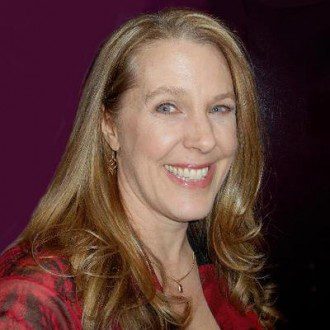 Cynthia Sue Larson (a.k.a. “The Quantum Optimist”) is a best-selling author and life coach who helps talented people struggling with unsatisfying lives find love, meaning, and prosperity. Cynthia has a degree in Physics from UC Berkeley, and practices and teaches meditation and martial arts. She has been featured in numerous shows including the History Channel, Coast to Coast AM, and BBC. Endorsed by Dr. Larry Dossey, Fred Alan Wolf, and Stanley Krippner, Cynthia Sue Larson’s newest book, Quantum Jumps: The Extraordinary Science of Happiness and Prosperity, describes the science of instantaneous transformation emerging from the convergence of recent research findings in Physics, Biology, and Psychology.
Cynthia Sue Larson (a.k.a. “The Quantum Optimist”) is a best-selling author and life coach who helps talented people struggling with unsatisfying lives find love, meaning, and prosperity. Cynthia has a degree in Physics from UC Berkeley, and practices and teaches meditation and martial arts. She has been featured in numerous shows including the History Channel, Coast to Coast AM, and BBC. Endorsed by Dr. Larry Dossey, Fred Alan Wolf, and Stanley Krippner, Cynthia Sue Larson’s newest book, Quantum Jumps: The Extraordinary Science of Happiness and Prosperity, describes the science of instantaneous transformation emerging from the convergence of recent research findings in Physics, Biology, and Psychology.
You can follow Cynthia’s work at:
- Website: RealityShifters.com
- Amazon: Cynthia’s author’s page
- Facebook: Facebook.com/Cynthia.Sue.Larson
- Blog: CynthiaSueLarson.wordpress.com
- Twitter: Twitter.com/CynthiaLarson
- YouTube: YouTube.com/c/CynthiaSueLarson
[pro_ad_display_adzone id=”110027″]

